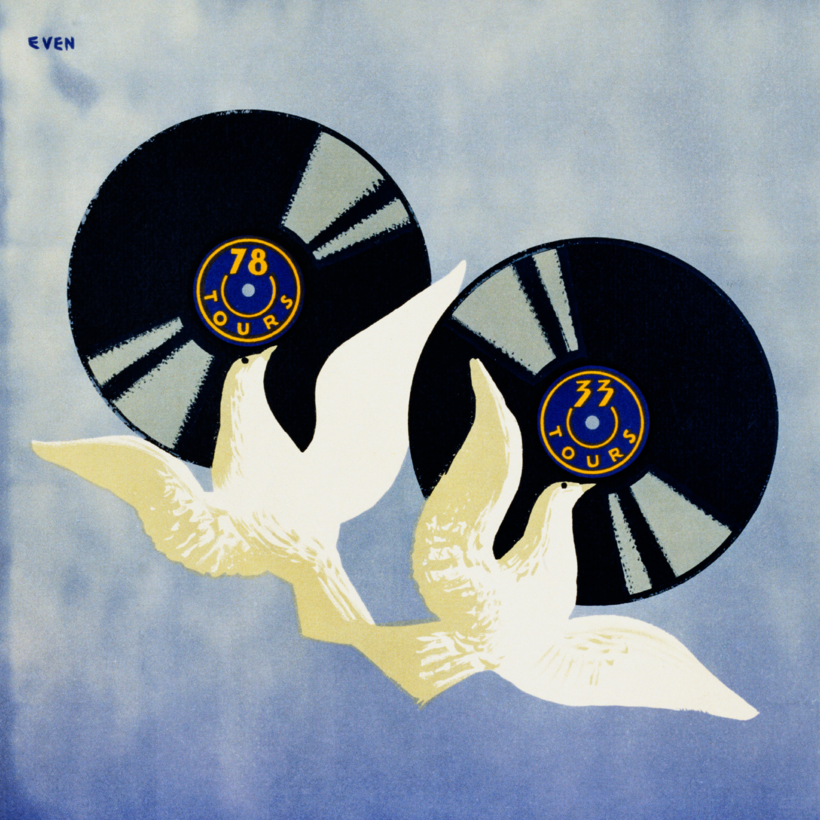Researching my new book, Into the Groove, was a daunting task. My subject was the entire history of sound, which has a lot of rabbit holes. One I can recommend is the bejeweled curiosities of the fledgling recording industry.
To set the scene: in 1877, Thomas Edison became the first person to record and play back sound. That first phonograph looked like a lathe with a hand-cranked, pre-grooved mandrel that was wrapped in tinfoil. This was both a wonder of the age and a complete pain to operate. When Edison turned his energies toward the light bulb, in 1878, the phonograph went into hibernation.
In the mid-1880s, a Washington, D.C.–based team led by Alexander Graham Bell returned with the Graphophone, an updated version of the phonograph. To cut a long and complicated story short, this re-ignited interest in audio reproduction.
Early efforts concentrated on marketing these new devices as office aids, machines to replace the humble stenographer. But soon, first-generation slot-machine phonographs, which played cylindrical records made of wax, hit upon a demand for audio entertainment.
The first phonograph was both a wonder of the age and a complete pain to operate.
America in the 1890s became the stage for the first stars of sound. This was the acoustic age. There were no mikes back then, no volume or tone controls. Just warm wax and horns. The sound waves went down the horn and hit a thin diaphragm, which vibrated and caused an attached stylus to etch the sound on a blank wax rotating cylinder. To play it back, you reversed the process. To turn up the volume, you had to sing louder or stick your head in the horn.
Many instruments simply didn’t work very well in the limited frequency range of the 1890s. Early recording stars weren’t necessarily the best singers or the most popular vaudeville veterans. Rather, they were just people with voices that clicked with the technology.
Each recording was an original. There was no way to mass-produce them, so your copy was truly your copy. To sell 100 copies of “Listen to the Mocking Bird,” for example, John Yorke AtLee, a mustachioed government clerk by day, a hitmaking whistler by night, had to perform the song 100 times.
To make more recordings at once, stars soon began performing before multiple recording machines, thereby producing copies in twos and threes.
The best-selling unit shifters of the 1890s tended to be comic songs, spoken-word skits, and, particularly, brass bands. None were more popular than Columbia Phonograph Company’s Marine Band, led by “The March King” John Philip Sousa. Soon every record company had its own brass band, churning out cylinders of songs such as “The Liberty Bell,” “The Thunderer,” and “The Washington Post.”
The studio was a tricky environment for a band. Everyone needed to be as close to the recording machine as possible. To speed up the venture, they would gather before a wall with 10 recording horns. If the cylinders looked like they were running out of space before they had reached the end of a piece, the conductor would just raise a hand, and the band would stop. If they ended early, they might fill the dead space with cheering or clapping.
The announcement was key, too. There was no artwork or sleeve notes in this age of the cylinder, so to know what was on your record you had to listen to the introduction.
One reason I’m passionate about music from the 1890s is that anyone can revisit it. Thanks to the pioneering work of First Sounds; the Library of Congress; Project IRENE; and the University of California, Santa Barbara, Cylinder Audio Archive, you can stream or download thousands of recordings—from proto-pop to comic monologues. Put your ear to the door of 1890.

Jonathan Scott’s Into the Groove: The Story of Sound from Tin Foil to Vinyl is out now from Bloomsbury


